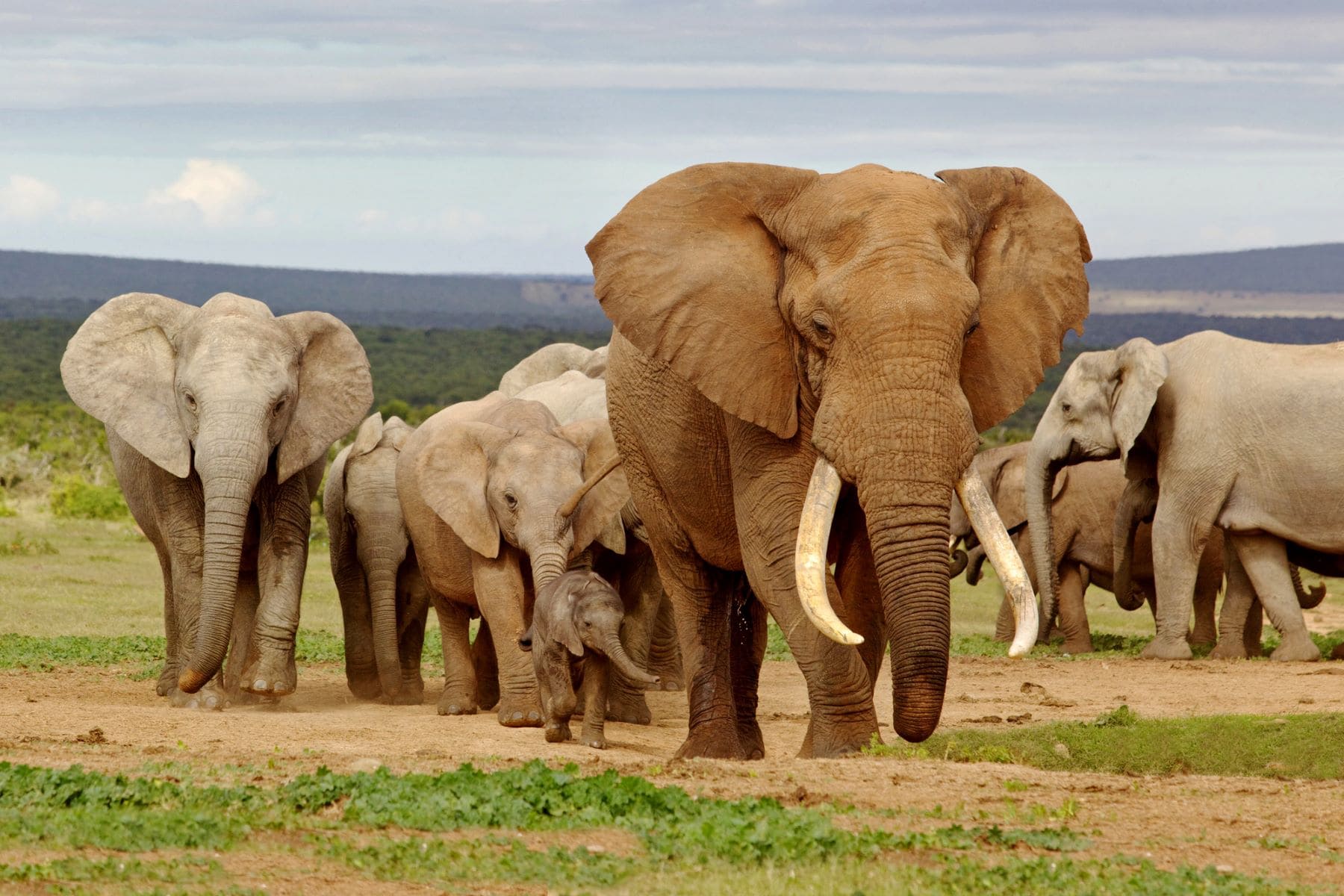He Elephant is a species that disappears due to human greed. The biggest mammal on the planet has a great predator: man. These giants are the victim of species traffic because of the ivory of their teeth, in addition to the loss of habitats, which also influence other species, such as the tiger or the Panda -Beer.
There are three types of Elephants: African (elephant of forest and savannah) and an Asian (elephant Indian). The three are protected and included in the IUCN RED LIST with a very disturbing common future: the Indian elephant and the African of Sabana are in danger, and those of critical forest of extinction.
In the last three decades We have lost 90% of forest elephants And, in the same dramatic tendency, the elephants Sabana disappeared 60% in the last half century and there are only less than 40,000 left elephants Asian.

Elephant travel
British and German scientists followed more than 150 African elephants for 20 years To discover how long walks are confronted with more than 100 kilometers per day. The results can be used to improve their shrines and to promote their conservation.
It may seem contraindic, but wild elephants often run more than 50 kilometers. They do it in herd and actually for three reasons: Find food, search for water and avoid your predators.
This week, A new study published in the magazine Journal of Animal Ecology has revealed that elephants Africans also have extraordinary capacity Optimize your energy consumption while moving.
The analysis of data from more than 150 people have shown researchers that these giants have an internal GPs who helps them to plan their movements based on energy costs and the availability of resources. The findings can provide important information for preservation of these animals and their habitats.
As herbivores of a few tons, Elephants must consume large amounts of vegetation (with low calorific content) Every day. However, its enormous size implies that movement in search of food requires considerable physical exertion. For this reason, every step counts.
Patterns
The researchers (from the University of Oxford, the German Center for Integrative Biodiversity Research (IDIV) and the Friedrich-Schiller University of Jena) They used 157 African Elephant GPS -Collected follow -up data between 1998 and 2020 in Noord -Kenia.
This information has been compiled by the Save the Elephants organization, because for them, CEncounter the movement patterns of elephants It is crucial in designing effective nature conservation strategies, especially in a context of habitat fragmentation and increased human activities. Until now, the most important factors that were by these journeys were certainly not entirely clear.
The results revealed that elephants They choose their routes, taking into account various factors. 94 % of the Pachiderms studied Avoid steep and robust countryThat suggests a conscious selection of the most efficient routes from the point of view of energy. Almost the same percentage (93 %) chose to give areas with greater productivity of plants, which shows a clear tendency to select environments rich in resources.
More division took place around water sources and how these movements influence. Some people stay close to these points, while others cover great distances. Finally, speed also influences your decisions. 74 % of elephants Avoid difficult land when you move slowlyFigure that rose to 87 % when they moved with intervening speeds and 93 % when they moved quickly.
According to researchers, this is behavior similar to those of birds that benefit from thermal currents To reduce flight efforts. «Although more detailed research is needed to fully understand how a elephant Use your Habitat, this study identifies a central factor in your relocation decisions: save energy where possible, “says the teacher Fritz Vollrath from the University of Oxford, co -author of the study.
How the movement decisions are explained
To analyze the data, the researchers used a computer model (ererscape) able to estimate the energy costs of the movement according to the body mass of the elephant And the slope of the country. Integration of this data with satellite images of vegetation and water availability, They managed to create an “energy landscape”something like a heat card that the movement decisions of the Elephants.
Then compared the locations that were visited by the elephants with other nearby areas that could have chosen, but did not do that. This allowed them to identify the environmental factors that influence their journeys and habitat selection.
The conclusions of the study have direct applications in the preservation of animals in the wild, on the Help with the design of protected areas and migration corridors Minimize those conflicts with people. Moreover, the future conservation strategies for nature preservation makes it possible to consider individual differences elephants In habitat preferences, especially with regard to access to water.
Emilio Berti, from the German Center for Integrative Research of Biodiversity, indicates that “these new results have important implications for Evaluate and plan conservation and restoration measuresSuch as dispersion runners, by explicitly taking into account the energy costs of the movement ».
The findings too They can contribute to predicting how elephants will respond to climate change, A critical factor because it influences both the availability of food and water.

